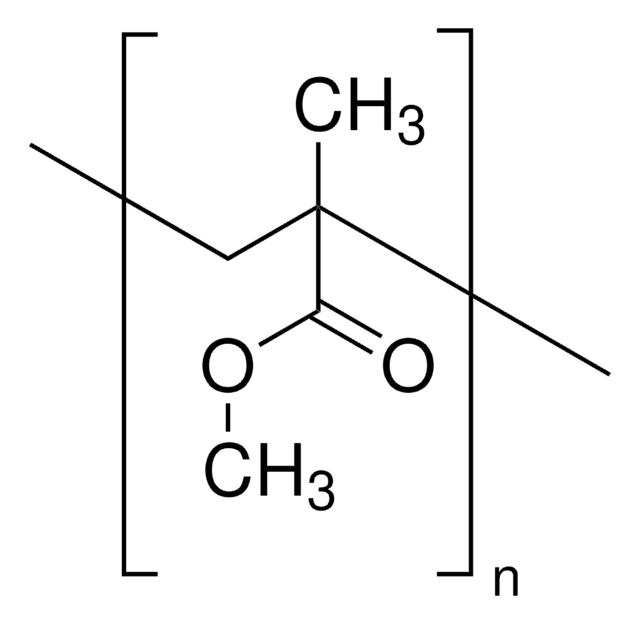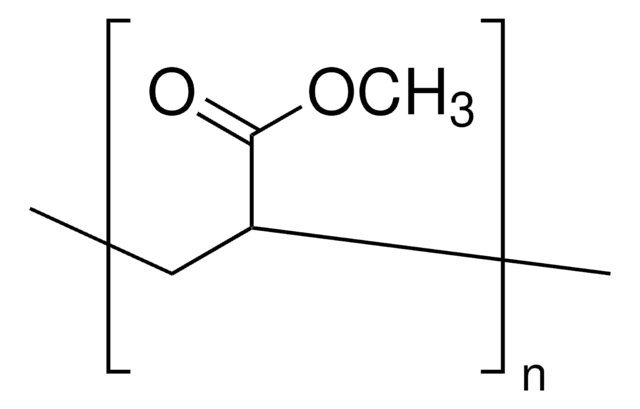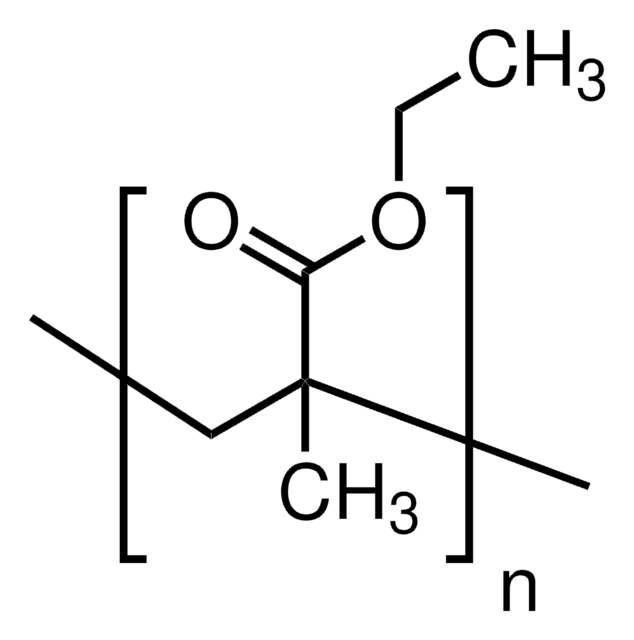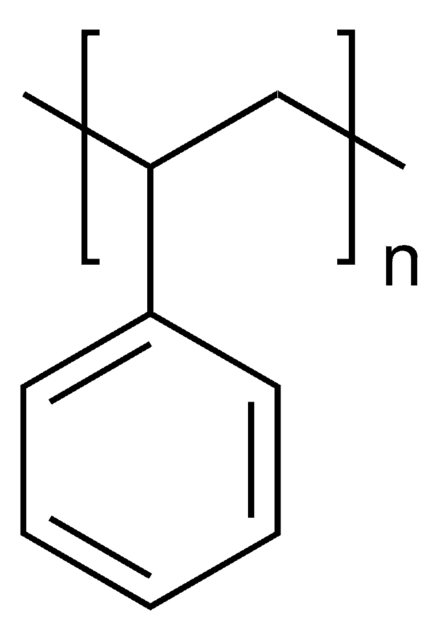182230
Poly(methyl methacrylate)
Synonym(s):
PMMA, Poly(methacrylic acid methyl ester)
About This Item
Recommended Products
autoignition temp.
580 °F
Quality Level
impurities
may contain ≤2.0% toluene
refractive index
n20/D 1.49
inherent viscosity
0.20 dL/g(lit.)
transition temp
Tg (DSC) 105 °C (midpoint)
solubility
H2O: insoluble
density
1.188 g/mL at 25 °C
InChI
1S/C5H9O2/c1-4(2)5(6)7-3/h1-3H3
InChI key
PMAMJWJDBDSDHV-UHFFFAOYSA-N
Looking for similar products? Visit Product Comparison Guide
Related Categories
General description
Application
Some studies report its use in
PMMA-titania hybrid optical thins films
PMMA/polystryrene/clay nanocomposites
PMMA/polyurethane/carbon black nanocomposites for methanol fuel cells
Storage Class
11 - Combustible Solids
wgk_germany
WGK 2
ppe
Eyeshields, Gloves, type N95 (US)
Certificates of Analysis (COA)
Search for Certificates of Analysis (COA) by entering the products Lot/Batch Number. Lot and Batch Numbers can be found on a product’s label following the words ‘Lot’ or ‘Batch’.
Already Own This Product?
Find documentation for the products that you have recently purchased in the Document Library.
Customers Also Viewed
Articles
In this article, we discuss issues critical to successful application of the electrospinning technique, including control of individual nanofibers to form secondary structures and assembly of nanofibers into 3D architectures.
Professor Aran (Claremont University, USA) thoroughly discusses the engineering of graphene based materials through careful functionalization of graphene oxide, a solution processable form of graphene.
Developed in the last several years, fluorescence quenching microscopy (FQM) has enabled rapid, inexpensive, and high-fidelity visualization of two-dimensional (2D) materials such as graphene-based sheets and MoS2.
Our team of scientists has experience in all areas of research including Life Science, Material Science, Chemical Synthesis, Chromatography, Analytical and many others.
Contact Technical Service



